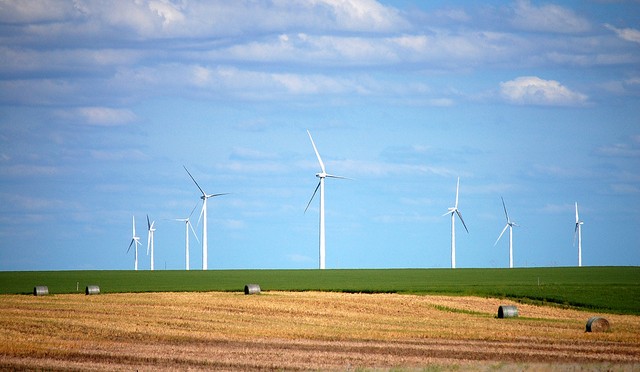While most Americans support developing more renewable energy, very few that work outside the energy industry spend any time thinking about how its delivered to their homes or businesses. Likely even fewer are aware of recent developments that might help their own utility bring more low-cost, renewable power online.
That’s why the Wind Energy Foundation’s A Renewable America campaign has expanded our work this year to highlight the benefits of expanding and upgrading transmission, as well as electricity markets. Our latest report, produced in collaboration with Renewable Northwest, explains how the recent development and expansion of the Western Energy Imbalance Market (EIM) – a real-time energy trading market that allows western utilities and the California Independent System Operator (CAISO) to buy and sell energy across the region – is delivering significant economic and environmental benefits.
In only three years of operation, the market has already delivered $254.98 million in incremental benefits. Perhaps more importantly, the benefits have increased each year as more utilities have joined – including a 144 percent increase from 2015 to 2016. PacifiCorp, which services customers in six states throughout the west and was the first utility to participate in the market in November 2014, has already realized over $100 million in benefits.
Before the implementation of the EIM, western utilities and CAISO were left to fill gaps in their electrical supply by picking up the phone and making power purchases from the trading room floor. But as more wind and solar power was developed, that system became increasingly impractical.
Now it’s much easier for market participants and grid operators to integrate large amounts of renewable resources, as they can automatically send electricity to where it is needed most at the lowest possible cost. For example, when California solar farms are generating more electricity than local utilities can use, PacifiCorp imports that low-cost power and can scale back generation at its own power plants, providing savings for its customers. In short, the EIM is allowing participants to pick and choose from a greater field of low-cost sources.
This flexibility is also helping reduce renewable energy curtailment, which happens when wind and solar plants generate more power than is needed at certain times. By creating a larger market for that power, the Western EIM has allowed market participants to find purchasers for that excess power.
As a result, market participants are relying less on costlier, older sources of power. The increased use of renewables has displaced over 214,927 metric tons of carbon pollution from January 2015 to September 2017 – equivalent to taking just over 43,000 cars off the road for a year.
Six utilities covering parts of eight western states have joined the EIM since its launch, including Portland General Electric and Puget Sound Energy. Another two utilities, Idaho Power and Powerex Corporation, are scheduled to join next year, followed by Seattle City Light, the Sacramento Municipal Utility District, and Los Angeles Department of Water and Power in 2019. Other utilities in the region such as the Bonneville Power Association, Tucson Electric Power, El Centro Nacional de Control de Energía, Avista Corporation, and NorthWestern Energy are all considering membership as well.
That’s all great news for renewable energy supporters and all consumers, as the bigger the market grows, the more flexible the system becomes. That allows for more low-cost power generation and cleaner air.


